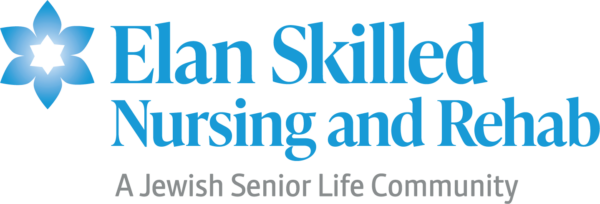Reducing the Impact of Arthritis

Arthritis is a common condition that affects older adults and can cause significant limitations in performing daily activities. There are several types of arthritis, but osteoarthritis is the most common form among older adults and one of the most common causes of physical disability. Our joints have a lining of cartilage that forms a slippery non-friction surface providing cushioning and lubrication to protect and ease joint movements. Osteoarthritis develops as the cushioning tissues break down over time. Changes often occur slowly and gradually worsen over time causing increasing pain and joint stiffness and swelling. Advanced age, obesity, history of injury or surgery to a joint, family history, bone density, trauma, and a lack of physical activity can lead to the onset and progressive worsening.
Osteoarthritis most commonly affects the hands, lower back, neck, and weight-bearing joints such as knees, hips and feet. The impact will depend on the joints affected and the degree of joint damage. Osteoarthritis can have a significant impact on our ability to perform basic activities of daily living, such as bathing, showering, dressing. It can also create challenges in allowing us to get up from a chair or bed, walk, and stand. These limitations can then lead to disability, social isolation, sleep disturbances, poor concentration, depression, lack of self-esteem and a loss of self-confidence.
Your health care provider may use a combination of methods to identify osteoarthritis. A detailed description of symptoms, your past medical history, a physical examination, X-Rays and other imaging studies to look at your joints and laboratory tests are often used by health care providers, in combination, to diagnose this condition.
While there is no cure for osteoarthritis, there are a number of treatment modalities that can be beneficial in managing pain, improving physical function and slowing the progression.
Weight Management: Increased weight will increase stress on your joints and cause faster progression of the condition. This can contribute to an increase in pain, injury, and disability if not effectively managed. Taking a multi-faceted approach that includes better food selection along with an increase in exercise can be very effective in improving your arthritis symptoms.
Exercise: A safe, individualized exercise program can be helpful in reducing pain and stiffness while improving flexibility, strength, and endurance. Low impact activities, such as stretching, walking, swimming, cycling and tai chi are great option. The key is to start slow and progressively increase your exercise.
Medications: Over-the-counter medications, such as oral pain relievers and topically applied analgesic (pain-relief) cremes and patches can be helpful in managing pain associated with osteoarthritis. Effectively managing pain can lead to an increase in activity and mobility. Nonsteroidal anti-inflammatory drugs (NSAIDs) is a commonly used medication to treat the effects of osteoarthritis. Advil, Motrin, and Ibuprofen are included in the oral NSAID category of medications. While these medications can be purchased at your local drug store without a physician prescription, it is important that you talk with your provider before taking. These medications can interfere with other medications you may take and can sometimes cause stomach upset, heart problems, and poor blood pressure control.
Heat and Cold Treatments: Both heat and cold therapy can relieve arthritis pain. Ice restricts blood flow, which can alleviate pain and swelling to reduce pain and discomfort. Heat increases blood flow, which can relax stiff, achy joints and relieve spasms and discomfort. Alternating heat and cold therapy may provide the best relief for arthritis symptoms.
Physical Therapy: Professionally trained therapists can establish an individualized program to assist you with improving your mobility, easing stiffness and discomfort, increasing range of motion and strengthening your muscles that support your joints. Your therapist can teach you exercises to improve your bone health and effectively manage your arthritis symptoms.
If you suffer from symptoms of arthritis, your first step is to consult your primary care physician. They will perform tests necessary to identify the source of your symptoms and work with you to develop an effective treatment plan.
Elan Skilled Nursing and Rehab, A Jewish Senior Life Community, specializes in providing rehabilitation programs for seniors with conditions such as osteoarthritis, and care following joint replacement surgeries and recovery following traumatic injuries. The Bridge, Elan’s Transitional Care Unit, provides in-house therapies within 24 hours of admission and up to six days a week. Elan supports recovering individuals through in-patient rehabilitation and assists long-term care residents with chronic or special needs. As an alternative to hospital-based rehabilitation care, Elan’s short-term rehabilitation program serves conditions such as knee or hip replacements and recovery following traumatic injuries, and can bridge the gap between your hospital stay and home.
To schedule a personal tour or talk to Elan’s admissions team about care options, please contact Melissa Bednar at 570-344-6177. You can also learn more about Elan Skilled Nursing and Rehab at elanseniorlife.org.
 Dr. Ken Sebastianelli has served as Medical Director for Elan Skilled Nursing and Rehab, a Jewish Senior Life Community, since 2012. Dr. Sebastianelli is a board-certified Internal Medicine practitioner with Prime Med Medical Group, and is affiliated with Geisinger Community Medical Center and Moses Taylor Hospital. He is also a member of the Medical Executive Committee at Geisinger Community Medical Center.
Dr. Ken Sebastianelli has served as Medical Director for Elan Skilled Nursing and Rehab, a Jewish Senior Life Community, since 2012. Dr. Sebastianelli is a board-certified Internal Medicine practitioner with Prime Med Medical Group, and is affiliated with Geisinger Community Medical Center and Moses Taylor Hospital. He is also a member of the Medical Executive Committee at Geisinger Community Medical Center.





